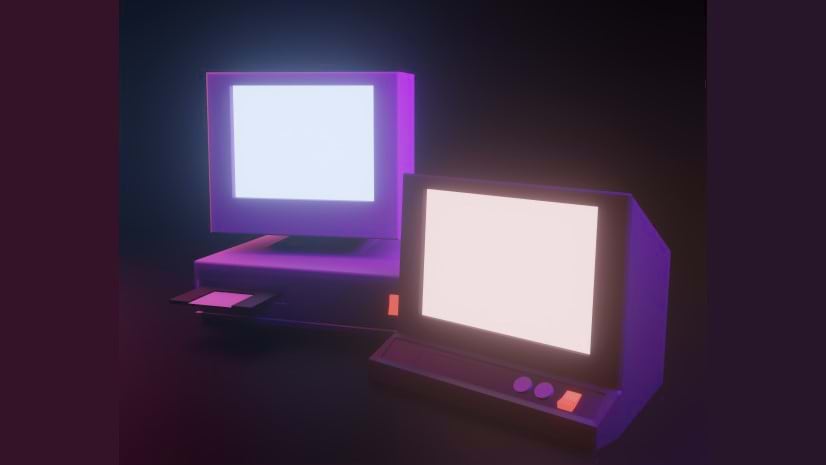When was the last time you bought software in a box? We used to love to crack open the box, read the user manual, and then insert the floppy disk into the drive. The term out-of-the-box software belongs to the scrap heap of expressions we still use that do not convey their original meaning. How about “Roll down the window,” “You sound like a broken record,” or “That’s a carbon copy.”
While “out-of-the-box” has lost its original meaning, the notion that software is ready to use without needing to spend a significant amount of time adjusting has tremendous value. It means it is fully functional now, without requiring a secondary investment to customize the software before you can use it. We wrote about this before in our article. Since Esri released the ArcGIS Utility Network, existing customers have often asked, “Can’t I build it myself?” or “Why upgrade? Or “What can I do with the utility network that I couldn’t do before?” and finally, “What’s the return on investment?”
Can’t I Build It Myself?
The utility network and its companion desktop software, ArcGIS Pro, are based on services-oriented architecture. The utility network has many new tools, functions, and capabilities not found in the prior version of Esri’s network software or our competitor’s offerings. A question that we occasionally get asked by customers is “Can’t I build it myself?”
The short answer is yes. For example, you could build custom network tracing tools using any modern programming language. It might take a long time, but you could do it. It might cost a lot of money, but you could do it. It might even perform as well as the utility network. But that would take a lot of tweaking and testing. What happens when you run into a bug with your tools? What about when your users ask for new features? Is your tool supported in web and mobile applications? The issue is an old one. The cost of customizing software doesn’t stop once it’s built, it just switches to requiring constant care and feeding. What happens when the programmer who built the tool is no longer around?
We hear stories of companies stuck with outmoded processes that rely on software customization because the developer supporting it is no longer around, and everyone is afraid to change it. So maybe you could build your own custom network application, but at what cost, and how long could you support it?
Why Upgrade?
The second question is, why not just leave the existing software alone? Any significant upgrade of software is painful. There will be some pain since the utility network has streamlined the data model and implemented substantial data validation rules. Many customers report that the biggest pain is all the data errors and inconsistencies this process discovers. This process then requires research and reworking of the data, paying down the technical debt of gaps in quality assurance processes. However, the result is higher quality data and a system that helps keep the data clean by preventing incorrect data entry up front. That’s a very good thing.
The most obvious answer to the why upgrade question is that the prior version is outdated and will eventually not be supported. That’s true, but Esri has been very conservative about ceasing support for customers on older versions of software. While the obsolete issue is certainly true, the better answer is that upgrading to the utility network moves users from a simple network topology to an all-purpose network model. The utility business is dramatically changing with decarbonization, renewable resources, a huge focus on storage technologies, and climate change’s unprecedented impacts. Utilities can no longer rely on a handful of desktop users in the office to have access to all the data and analytical tools. Every user of the software should have access to the full capabilities of the software and every enterprise system should have access to those same analytical capabilities. As stated earlier, they need a system that ensures high-quality data and minimal latency.
What Can I Do Now I Couldn’t Do Before?
A lot. The list is large. One of the hidden gems of Esri’s utility network is that it is web services based, as stated above. This is not evolutionary. It is transformational. The utility network has torn down the boundaries between the office use of GIS and mobile users. What goes on in the field stays in the field is no longer true. Here is a short list of things you couldn’t do before:
- Autodesk and BIM (Building Information Modeling) integration
- Containment – the ability to model assets inside other assets, like switch cabinets
- Explicit and implicit connectivity
- Integration with pipeline models
- Advanced tracing tools
- 3D representation
- Auto-create of schematics (diagrams)
- Direct use of SAP’s HANA for data management
- The data validation tools
- Non-spatial objects, such as modeling and tracing individual fiber strands in fiber cables
- Real-time data integration
- Fully cloud compliance
- Having utility network capability on any device, anywhere, and at any time is priceless.
If you were building all this in-house, could we have afforded to develop this functionality? To maintain it?
What is the Return on Investment?
The last question is the most common one. Most people think of ROI (Return on Investment) in the simplest financials terms, looking strictly at time and software costs. We think a better term might be business value. Business value includes more than how long it takes to offset an expense and acknowledges the importance of other factors such as safety, regulatory compliance, employee productivity, and customer service.
Time is money. By shortening most tasks, simplifying processes, not dealing with complex one-off integrations, or not having to labor over supporting custom code, utilities lower labor costs and cut overtime and contractor staffing. We are all in a time of labor shortages. Saving time is crucial to get tasks completed. If it used to take an hour to do each of a thousand tasks in a week or month, cutting time to a couple of minutes lowers costs substantially.
Bad data creates safety problems, increases friction between systems and departments, extends processes, requires rework, and can extend outages in the case of utilities. Impeccable data quality gives employees better information, improving morale. Data quality impacts all kinds of service issues such as new customer connections to permitting, easement details, and inspections.
Utilities are rapidly moving into using GIS for analytics. Without timely, complete and accurate data, analytics become unreliable and newer technologies become difficult to adopt. Hard-to-access data often makes regulatory processes more difficult. Ease of reporting makes audits less painful and less costly.
ArcGIS Utility Network Is Out of the Box
Yes, out of the box has lost its original meaning today. The underlying concept is that it is ready to go now. The utility network is easy to configure – without a single line of code. It has the tools and capabilities to meet the increasing demands of today’s utility business. While the cost of implementation is primarily about data cleanup and simplification of the data model, the results will yield value for years.





Commenting is not enabled for this article.